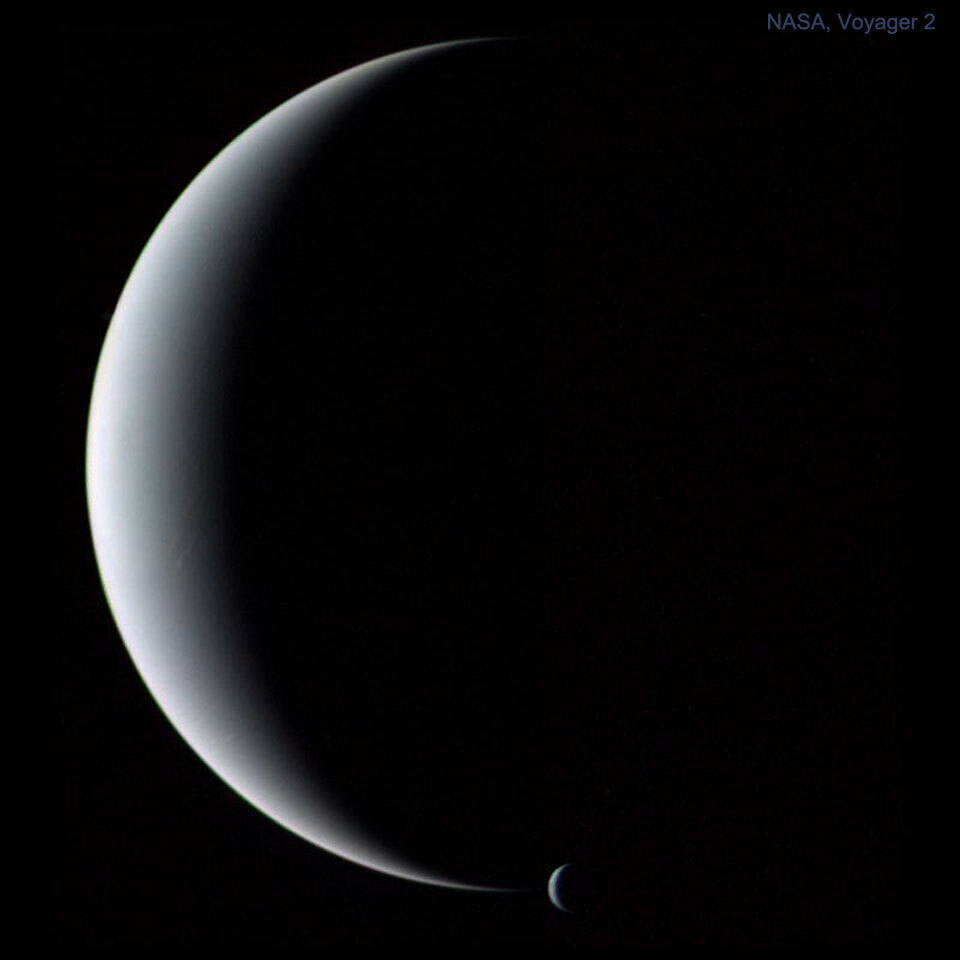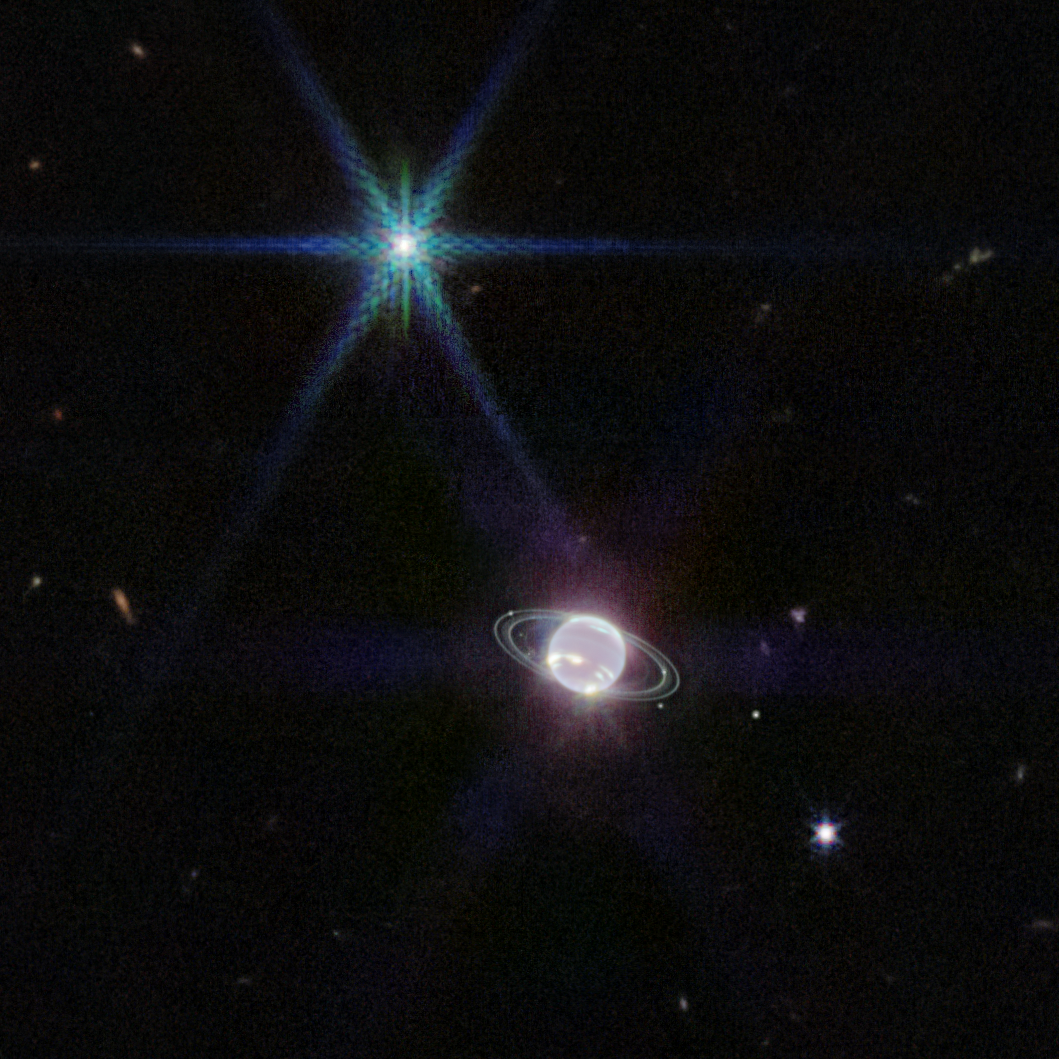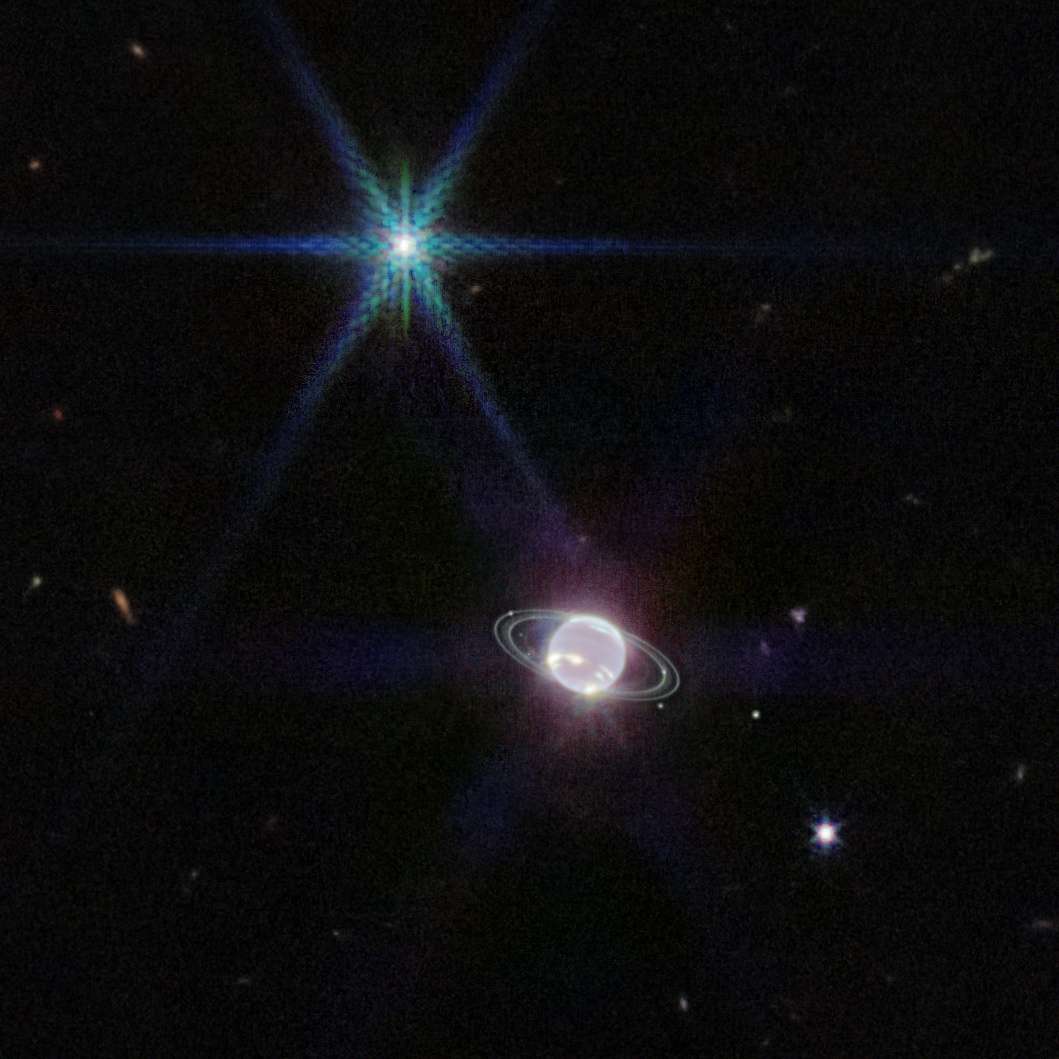#neptune
From #IanWood
a candidate for '**** hits the fan chart' of the year
a #solar #eclipse parallel #red #star #MENKAR
#URANUS parallel a red star
#SATURN parallel a red star..conjunct #rahu and #neptune...giving an exact #vedic aspect to uranus...
loots of conflict, control measures. Confusion, deception..
extra polarity between old and new, control and freedom..
#INTENSE #future change is non stop
https://www.youtube.com/watch?v=R5LCBPTxqpY
6 Sept 2024 #Pluto in #Tropical #Astrology: Delving into the Depths of #Transformation
Today, we'll discuss Pluto's significant position at the last degree of Capricorn and its upcoming connections with #Uranus and #Neptune. These outer planets are closely linked by harmonious aspects, making this a crucial moment to explore. We'll dive into the archetypal meanings behind these planetary combinations, using insights from Ren Butler's The #Archetypal #Universe to understand why this transit is so impactful.
#quote
"On September 18, a #partial Lunar #Eclipse accompanies the #Full #Moon in #purvabhabrapada. The Moon conjoins #Neptune, and the two form the apex of a harmonious #kite figure with the #Sun, #Pluto, and #Uranus. #Mercury and #Saturn are in exact opposition to each other. #Jupiter is still in tense aspects to the Moon and Mercury.
The mystical quality of time calls upon us to keep an eye on our boundaries and limitations. If your life’s inner and outer structures are stable, you can receive vital impulses during these days, the fruits of which will be welcome in the coming weeks. Unstable situations and circumstances, on the other hand, may call for a fundamental reorientation. The signs of the times are excellent for restructuring, as indicated by the Sun-Uranus trine on September 19."

https://www.australiangeographic.com.au/news/2022/09/nasa-shares-crystal-clear-image-of-neptunes-rings/
https://www.youtube.com/watch?v=DhLm_4pBrso
Something’s Started Happening in the #Clouds of #Neptune | Our #SolarSystem’s #Planets
Видео с текстом от NEPTUNE
 NEPTUNE опубликовали официальное видео с текстом к новому треку Metal Heart
NEPTUNE опубликовали официальное видео с текстом к новому треку Metal Heart
#Neptune #DeathMetal #Death_Metal
Видео: https://www.youtube.com/watch?v=-F1D9ThMkSo
https://youtube.com/watch?v=9dUSJrJV6ao
♦ June 1: Planet Parade
♦ June 3: Conjunction of #Moon and #Mars
♦ June 4: Conjunction of #Jupiter and #Mercury
♦ June 6: New Moon
♦ June 14: Moon at apogee
♦ June 20: Lunar Occultation of #Antares
♦ June 20: Summer Solstice
♦ June 21: Strawberry Moon
♦ June 27: Moon at perigee
♦ June 27-28: Conjunction of Moon and #Saturn
♦ June 28: Lunar Occultation of #Neptune
♦ June 29: Saturn enters retrograde motion
Russian landing ship Konstantin Olshansky hit with Neptune missile, says Ukraine
Ukraine has claimed yet another successful strike on Russia’s Black Sea Fleet (BSF), announcing on March 26 that the landing ship #Konstantin Olshansky had been hit by a Neptune missile.
Navy spokesperson Dmytro Pletenchuk said damage to the vessel was still being determined.
In recent months, Ukraine has intensified its attacks on BSF targets in occupied Crimea, successfully targeting several ships and forcing Russian forces to redeploy to safer waters.
In comments to LIGA.net, Pletenchuk said the attack on the Konstantin Olshansky had occurred earlier this week on March 23, the same day two Russian Ropucha-class landing ships, Yamal and Azov, were hit.
Built in 1985, the Konstantin Olshansky was transferred to the Ukrainian Navy in 1996 when the naval fleet of the Soviet Union was divided up.
It was one of many Ukrainian ships seized by Russian forces during the annexation of Crimea in 2014.
#RussiaInvadedUkraine #BlackSeaFleet #StandWithUkraine #Neptune
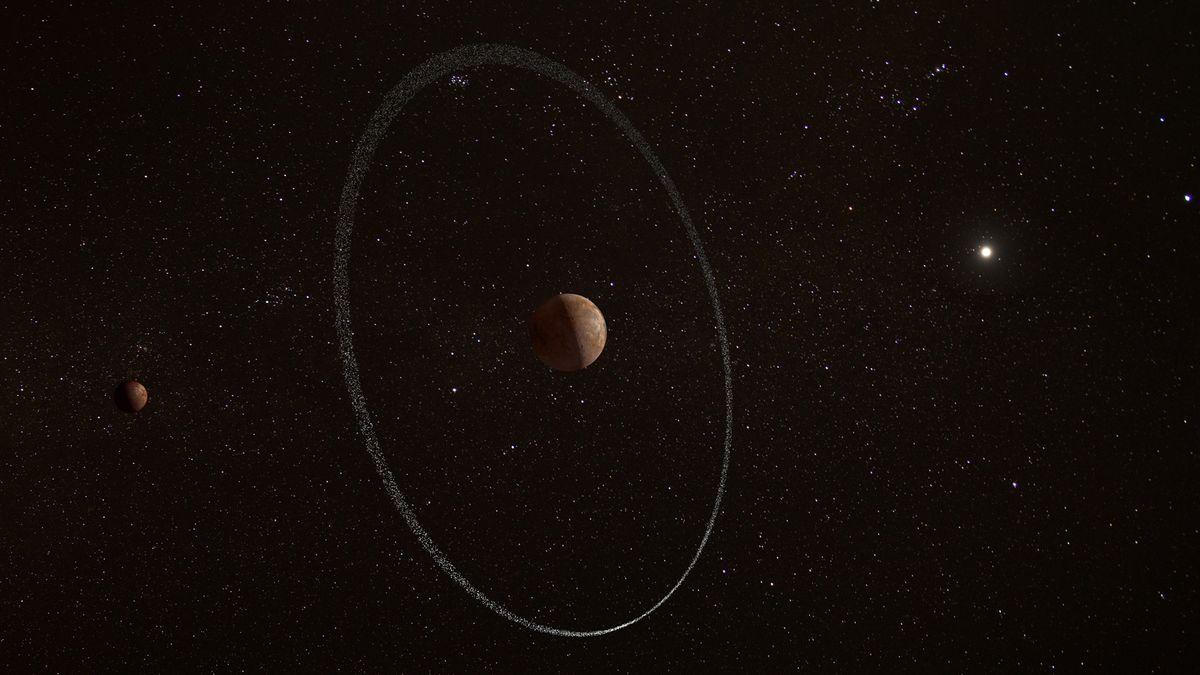
A #mini-planet orbiting in the frigid #outer reaches of the #solarsystem has a #Saturn-like #ring of #dust and #debris that #defies the rules of #physics, a new study has #revealed.
The planet in question is called #Quaoar and it's the #seventh largest of the known #dwarf #planets of which #Pluto is the #king. #Discovered in #2002 and about 697 miles wide (1,121 kilometers), Quaoar is one of the so-called #trans-Neptunian objects, small planets orbiting #beyond the solar system's outermost planet #Neptune.
Residing in the #KuiperBelt, the doughnut-shaped ring of rocky and icy debris in the outer solar system, Quaoar is a proud owner of its own #moon, the 100-mile-wide (160 km) #Weywot. And a recent observation campaign revealed that it also has a ring of material in its orbit.
That by itself wouldn't be so special. The gas giant Saturn is known to possess a whole series of rings. #Jupiter, Neptune and #Uranus also have some. One other trans-Neptunian object — #Haumea — has been found to have a ring, and the space rock #Chariklo that orbits between #Saturn and #Uranus also has one. So what exactly sets Quaoar's ring apart?
Related: Dwarf planets: science & facts about the solar system’s smaller worlds
Quaoar's ring is at a very unusual #distance from its parent body. In fact, before astronomers discovered Quaoar's ring in observations from several telescopes conducted between 2018 and 2021, they had thought that it was impossible for a ring to exist at such a distance. With a radius of about 2,420 miles (3,885 km) from Quaoar's center, the ring is too far away from the dwarf planet that its gravity should no longer be able to keep the material dispersed. Instead, it should coalesce under its own gravity and form another moon, just like Weywot. By not having done that, the ring has breached what astronomers call the Roche limit, the first known ring around a #celestial body to have done so.
"What is so intriguing about this discovery around Quaoar is that the ring of material is much farther out than the Roche limit," Giovanni Bruno, an astronomer at Italy's National Institute for Astrophysics (INAF) and one of the authors of the paper, said in a European #Space Agency (ESA) statement. "As a result of our observations, the classical notion that dense rings survive only inside the Roche limit of a planetary body must be thoroughly revised."
The ring was discovered during a series of occultations, essentially eclipses, when Quaoar passed between Earth and several more distant but much brighter stars. When an occultation occurs, the light of the background star temporarily dims. The effect is only visible to very sensitive telescopes and is frequently used to detect exoplanets orbiting stars in our Milky Way galaxy, which is why ESA's exoplanet hunter Cheops was among the telescopes watching these Quaoar occultations.
When astronomers analyzed the data, they realized that apart from the main dip in the background stars' brightness, they could detect two smaller drops. Since drops occurred before and after the main occultation, respectively, the researchers thought that Quaoar must be surrounded with a ring.
Several Earth-based telescopes also observed the occultations with similar results, but Cheops' data were particularly valuable as they proved that the odd dimmings were not caused by the effects of Earth's atmosphere.
https://www.space.com/mysterious-ring-around-dwarf-planet-puzzles-astronomers
https://olivebites.blogspot.com/2024/01/new-moon-in-capricorn-january-11th-2024.html
NEW MOON IN CAPRICORN | JANUARY 11TH, 2024 - IMBALANCES PUSH US TO CHOOSE, A NEW STORY BEGINS TO TAKE SHAPE, SET YOUR GOALS, MAKE YOUR PLANS FOR SOMETHING NEW BUT NOT TOTALLY NEW, STARTING FROM WHERE WE ARE NOW AS 'TIME RUNS OUT' GETS STIRRED UP ... AGAIN
THURSDAY, JANUARY 11, 2024
Cat Ivins
..."This is our first #NewMoon in #Capricorn with #Saturn in $Pisces since 1996. This is our last New Moon in Capricorn with #Pluto in Capricorn in our lifetime. Saturn and Pisces are not naturally compatible. Saturn is all about structure and limits and discipline and achievement and remember Saturn has been in the sign of his ancient rulership (Aquarius) and the sign of his rulership (Capricorn) for several years before this. We had gotten accustomed to being STRONG and to HAVING to be strong. Saturn in Pisces answering to #Neptune is not so strong and the good news for us is we don't have to be either! As Saturn in Pisces dissolves limits and rules and structures we have grown used to - this may not be comfortable. Time melts. Reality is an illusion. Reality is malleable. We might be less ambitious. Maybe with Saturn in Pisces we are building things that are not quite so 'real', not quite so lasting, but also maybe not quite so rigid.
2024 will be a year when we start the process of stopping trying to apply old solutions to problems that can't be solved through our ENGAGEMENT with the struggle. Cappy New Moons are not about fast action (although the trine to Uranus will create a smooth portal for fast change if its needed) so much as it is about allowing ourselves to PATIENTLY grow into a new situation. With Pluto changing signs on the 20th, we all need to be prepared for things to move more quickly and in a new direction.
...
Saturn, the ruler of this lunation, is well-aspected through sextiles with Mars and Jupiter. Although his placement in Pisces and Mercury's square to Neptune in Pisces plus Pluto at the very end of Cappy AGAIN will likely speak of some Capricorn exhaustion here. That's OK. Being tired of the same old thing makes that trine with Uranus - the something new - even more appealing!
Venus and Jupiter are in mutual reception. The benefics having access to their home signs through each other is a good sign at this New Moon. "...

An illustration shows the rings from the surface of the ice-rock centaur #Chiron.
A #bizarre #object that sometimes gets as close to the #Sun as #Saturn, and other times retreats as far out as #Uranus, has been discovered to have a transforming disk of dust around it that changes shape and can even mimic rings.
#Minor #planet 2060 Chiron is what's known as a #Centaur, which are captured cometary objects that travel around the sun on looping orbits between #Jupiter and #Neptune. Chiron is just 218 kilometers (135 miles) across and occasionally has outbursts like a comet. To date, however, no spacecraft has ever visited a Centaur.
In 2011, Chiron passed in front of a faint #star from our point of view here on #Earth. Such events are referred to as "stellar occultations," and based on how an object such as Chiron blocks a star's light, the occulting object's shape and size can be determined through deduction. During the 2011 occultation, it was noticed that the star's light dimmed slightly — twice before Chiron itself occulted the star, and two further times after Chiron had moved past the star. This observation was interpreted as Chiron having a double-ring system of dust.
Then, Chiron occulted another star on Nov. 28, 2018, in an event taken advantage of by Amanda Sickafoose, who is a senior scientist at the Planetary Science Institute in Tucson, Arizona. Because Chiron's shadow cast by the star is so small, it crossed only a narrow region of the Earth, clipping southern Africa. Sickafoose therefore led a team who used the 1.9-meter (6.2 feet) telescope at the South African Astronomical Observatory in Sutherland, South Africa, to observe the occultation.
Their results, published exactly five years later, tell a slightly different story to 2011.
"We detected dips in the starlight as it was blocked by Chiron's nucleus as well as by material located between 300 to 400 kilometers on either side," Sickafoose said in a statement.
Specifically, as Chiron moved over the star, Sickafoose's team observed dips in starlight produced by dusty material at radii of 352, 344 and 316 kilometers (approximately 219, 214 and 196 miles) from the center of Chiron. In other words, that was between about 100 to 130 kilometers (60 to 80 miles) above the Centaur's surface. After Chiron had moved away from the star, the scientists then witnessed two further dips at 357 and 364 kilometers (221 and 226 miles) from Chiron's center.
If Chiron had only two stable rings, one would expect just two pairs of symmetrical dips in light on either side of Chiron. The anomalous third dip on one side of the Centaur is evidence that the situation is not so clear-cut. Furthermore, the dips caused by the mystery material seemingly occurred tens of kilometers away from the locations of the rings as measured in 2011 (although they do fall within the margin of error of the 2011 observations). The magnitude of the dips in starlight caused by the material, however, is also different.
"The locations and amounts of material that were detected around Chiron are different enough from previous observations to suggest that there is not a stable ring system but rather surrounding material that is currently evolving," said Sickafoose.
Another stellar occultation by Chiron on Dec. 15, 2022, was observed at the Kottamia Astronomical Observatory in Egypt by a team led by Jose Luis Ortiz of the Instituto de Astrofísica de Andalucía in Spain. They found the material around Chiron had changed again, detecting three symmetrical structures on either side of Chiron. Two of the features are narrow and one is broad, and that together they seem to form a wide disk 580 kilometers (360 miles) across.
The origin and composition of this material around Chiron remains unknown, although the likelihood is that it comes from Chiron itself, perhaps blasted into space by cometary outbursts such as those witnessed in the summer of 2021 when Chiron brightened by 0.6 magnitudes. For context, a magnitude 0 object is 100 times brighter than a magnitude 5 object in this brightness system. Another Centaur, the 250-kilometer (160 miles) wide 10199 Chariklo, was also previously shown to have rings during a stellar occultation in 2013, and confirmed during another stellar occultation witnessed by the James Webb Space Telescope on Oct. 18, 2022. The JWST even detected water-ice on Chariklo. However, the findings at Chiron call into question the nature of the structures around Chariklo, too.
Occultations of faint stars by Chiron happen fairly regularly, and future observations now have a challenge on their hands to explain what is happening around the distant, apparently morphing, Centaur.
https://www.astrologybylauren.com/new-blog/2023/11/30/neptune-stations-direct
#Neptune Stations Direct
#Astrology By Lauren
..."Neptune is that feeling you get when you see the magnificence of a perfect sunrise, when you write the last line of your poem, when you immerse yourself in the beauty and profundity of nature, walk by the sea, or notice the dew on the petal of a flower. Neptune is that which inspires, and fills your heart with a love so transcendent, whether in a dream, a song, or with the feel of a subtle breeze like the breath of a baby on your skin. Neptune is that experience you have when you do a good deed, say a kind word, or come to realize the ways that we are all so deeply moved by and connected to one another on these subtle yet deeply ethereal levels.
Mercury in Capricorn is slowing for its retrograde station on the 13th, at which point it will be making an expansive and hopeful trine to Jupiter. And it is through the very ordinary moments in our lives that we are brought into alignment with that divine spark of magic that is Neptune, and our most profound ideals. Dare to feel more, see more, hear more, and sense more: Neptune stations Direct on December 6th. "...

JWST captured the clearest view of #Neptune’s rings and 7 of its 14 known #moons. #Triton, Neptune’s largest #moon, appears brighter than the planet in this Webb view.
https://www.reddit.com/r/space/comments/162ouu6/jwst_captured_the_clearest_view_of_neptunes_rings/
#Vedic #Astrology assigns deities to #planets, and according to the #ancient #palm #leaf called Vasistha Nadi, the names of the grahas or planets (yet to be discovered) would be #Prajapati ( #Uranus), #Varuna ( #Neptune), and #Yama ( #Pluto). As Neptune is moving from #Aquarius to Pisces, we focus on the effects of Neptune, with Varuna as Presiding Deity.

Varuna Peyarchi: Neptune to Pisces
On 18-19 February 2023, Neptune transited from Aquarius to Pisces and is currently sandhi 0.00° Pisces (deprived of energy) where it will remain for a little more than three weeks. Sandi means “deprived of energy” so the effect of Neptune moving to Pisces will not be pronounced for some time.
As referenced earlier, we look to outer planets when they change signs. Neptune has capacity for non-attachment, infinite love and beauty, charity, altruism, bliss and rapture, and awareness of divinity, transcendence of duality.
Neptune likes to transcend, to merge, to flow, to melt, to yield. Neptune can accept changes, allow a changing environment, and can love selflessly and impersonally. This is an important capacity of Neptune, for most young people and youth take love as a matter of possession and territory – possession of someone’s mind, and territory of their body. Nothing could be further from love. Dreams of love and idealism, infatuation and attachment all have to have both feet on the ground and squarely detached with your own boundaries intact around YOU.
Neptune is traditionally seen as the planet that imagines, envisions, dreams and inspires. While Neptune offers all that, and more: to fantasize, to heighten, one has to keep their feet on the ground or end up helpless, spaced out, dissolving into chaos, and prey to drugs and the unconscious mind. One can self-destruct, abdicate all responsibility and end up sabotaging themselves. While Neptune – always near the Collective Unconscious – offers access to the psychic realms, and psi experiences – these can all be achieved with self discipline, self-control and self-respect. Psychedelic drugs and the like are not necessary to achieve this. You can reach the same high meditating as those people who tell they get a high using bongs.
What will Neptune’s transit in Pisces bring? One would hope for a gentler, kinder, more spiritually inspired world. However, this is not historically what we have seen before. Neptune represents secret plots, rebellions, and sedition, and Neptune in Pisces will be a time of tremendous idealism associated with an urge to dissolve tired old paradigms and world views in favour of a more charitable universal vision. We live in an era where significant changes have taken place (our great-grandparents would not recognise our modern, electronic world – except, perhaps, for the radio and print news. So much has changed with living, co-habitation, housing, working, travel, child-care centres and the gig economy.
Pisces is a water sign, a moksha sign, and harbours great spiritual awareness, creative achievement, and compassionate action. But when disconnected from the All, from peers, society and culture, in its lower expression, Pisces has a tendency for escapism, deception, and delusion. This is the signification of the fish going in two directions, we can pull towards separation and duality, we can pull towards the experience of everything is Atma, and the lifting of the veil of illusion.
#Neptune in #Pisces provides the impetus towards transcendence of duality, unity consciousness, surrender and non-attachment. So Neptune in Pisces seeks to transcend, to merge, to surrender, to sacrifice, to let go and let God. On the other hand, Neptune seeks to dream, to inspire, to glamorise, to idealise, to imagine, to envision, to fantasise, to intuit, to enchant, to beguile. In summary, the positive benefits of Neptune are accessed when we are grounded and following dharma.
About #Lord #Varuna
Lord Varuna
Lord Varuna is revered in Hinduism as the God of water and his sway extends to the underwater world. The Hindu Goddess Varuni is his consort and a Makara serves as his mount. According to the Puranas, he is the son of sage Kashyapa and one of the twelve Gods considered as Adityas, owing to their origin from the Mother of Gods, Aditi. Varuna possesses the lordship of the waters and was entrusted with the task of overseeing the clouds and rains. He is thus known as the king of waters and controls the Oceans, Seas, Rivers, and all other water bodies. During the Mahabharata period, the great Pandava, Arjuna was hailed as the son of Lord Varuna. It is also widely believed that praying to him protects us from thunder and lighting.
Varuna #Gayatri
Aum Jalabimbaye Vidmahe
Nila Purushaye Dhimahi
Tanno Varunah Prachodayat
Om, Let us meditate on the reflection of water
O person of ocean blue, give me higher intellect
And let the God of water illuminate my mind

#Ukraine is adapting domestically-produced Neptune anti-ship missiles to bolster its long-range strike capabilities in its three-month-old counteroffensive, experts have suggested, after #Kiev publicized its "completely modern" weapon in action in #Crimea.
Modified #Neptune missiles, which #Kiev developed just before the outbreak of full-scale war in the country, "are part of a broader recent Ukrainian effort to increase its long-range strike capacity," according to Ian Williams, deputy director of the Missile Defense Project at the Center for Strategic and International Studies.
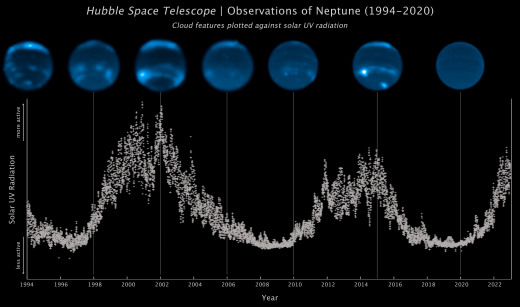
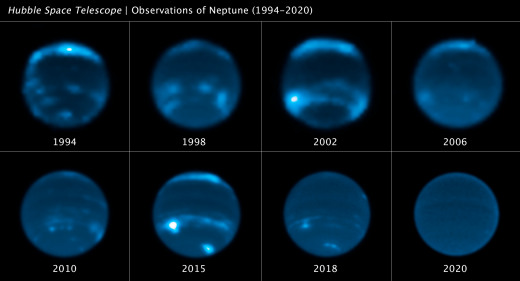
#SUNSPOTS MAKE #CLOUDS ON #NEPTUNE:
A new paper published Aug. 17th in the #research journal Icarus offers dramatic proof that solar activity can affect #planetary #weather. The big surprise: That planet is Neptune, 2.5 billion miles from the sun. Twenty-six years of images taken by the Hubble Space Telescope show bright clouds forming in sync with the 11-year solar cycle:
The connection between Neptune and solar activity is surprising to planetary scientists because Neptune is our solar system's farthest major planet and receives only 0.1% of the sunlight Earth receives. Yet Neptune's cloudy weather seems to be driven by solar activity, and not the planet's four seasons, which each last approximately 40 years.
"This is extremely exciting and unexpected," says Erandi Chavez, a graduate student at Harvard-Smithsonian's Center for Astrophysics, who led the study when she was a student at UC Berkeley.
The research team confirmed Hubble's results using data from the Webb Space Telescope, the Keck Observatory, and the Lick Observatory. The link between sunspots and Neptune's clouds appears to be solar ultraviolet (UV) radiation, which peaks when sunspot counts are high.
"Our findings support the theory that the #sun's #UV rays, when strong enough, may be triggering a photochemical reaction that produces Neptune's clouds," says Imke de Pater, emeritus professor of #astronomy at UC Berkeley and a senior co-author of the study.
Based on the data so far, it seems to take about two years for Neptune's clouds to fully form once the solar cycle reaches its peak. Solar Cycle 25 is rising now with a peak expected in 2024. This means Neptune's cloudy season is about to begin--a development amateur astronomers may be able to observe.
